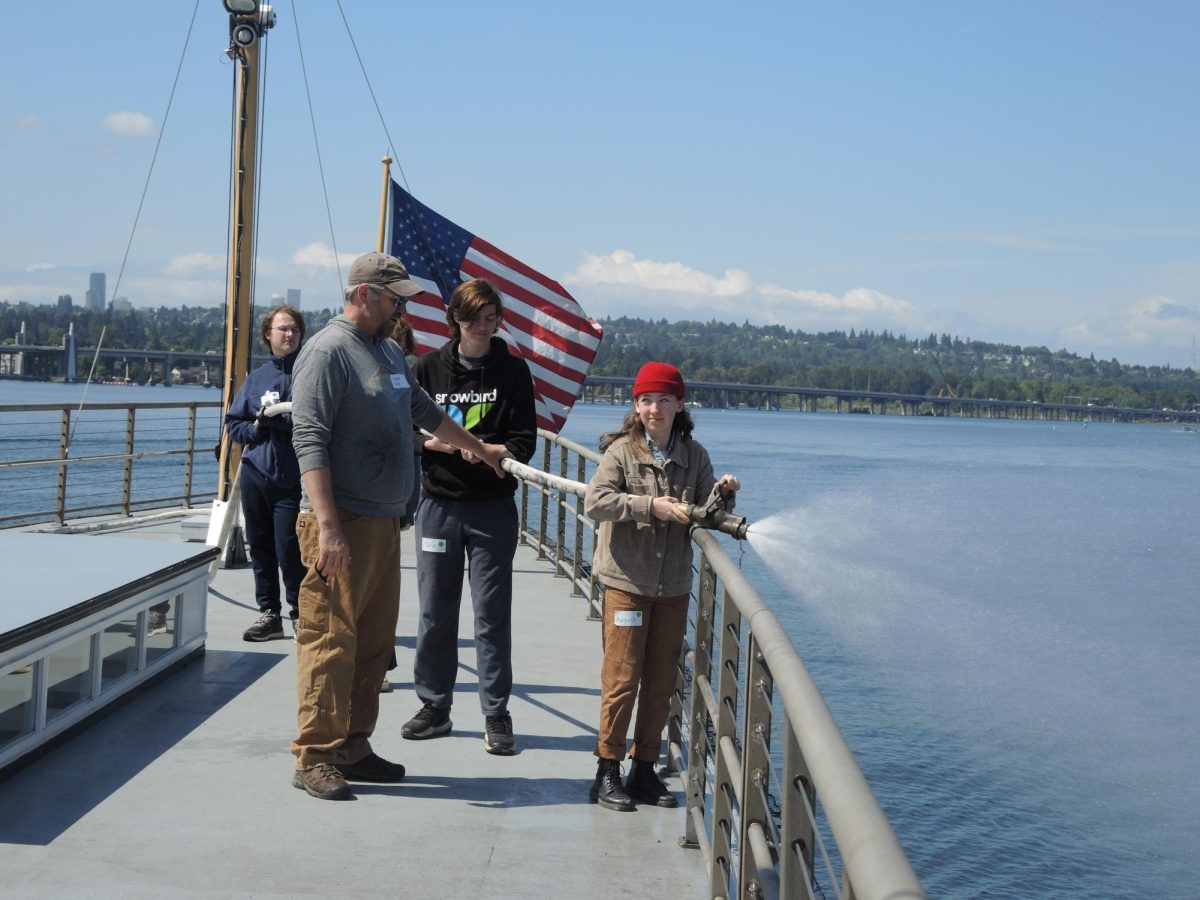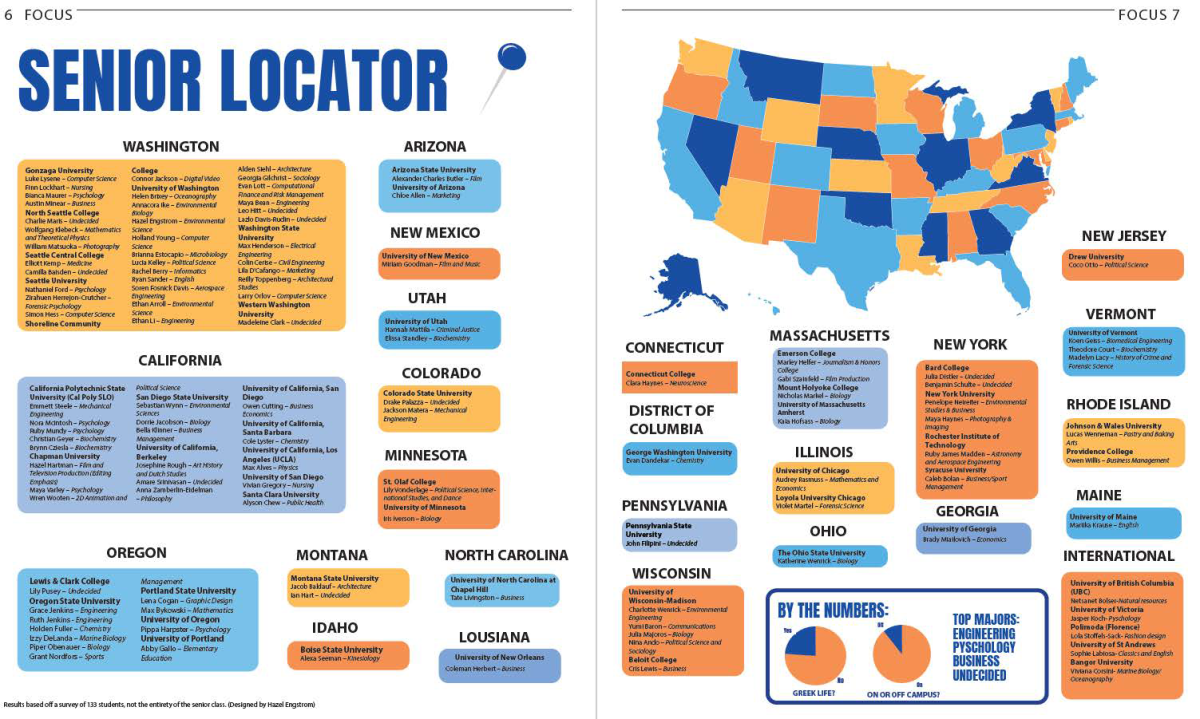As of this semester, administration, in agreement with teacher John Foster, plan to no longer offer Foster’s two Maritime classes due to insufficient Maritime 2 and excessive Maritime 1 enrollment numbers.
The two classes, a Maritime Survey class and a Maritime Skills class, were a pair of Career and Technical Education (CTE) semester courses that were part of the Ballard Maritime Academy (BMA), which Foster described as a “school within a school.”
The BMA program still in part exists through teacher Noam Gundle’s Oceanography classes. While Oceanography focuses more on the science of the ocean than on boat operation, it shares some subjects with Foster’s classes, such as waves, tides and navigation, and in some years, including this one, the class has gone on trips on sailing boats.
“It’s unfortunate that Foster will not be teaching those two classes next year,” Gundle said. “It remains to be seen what happens to the future of our Maritime program, but students at Ballard High School still have Maritime Academy classes that they can take: Oceanography 1 and Oceanography 2.”
Foster, a former Navy education officer, taught generations of BHS students skills needed for a career in sailing. According to junior Evan Bursell who took Foster’s Maritime classes his freshman year, skills that were taught included firefighting, rope tying and charting.
“It was a great introduction into that world,” Bursell said, adding that he believed the classes benefited even students who never went into a related job.
Foster’s Maritime students went on field trips, such as trips on Lake Union on the steamship Virginia V and trips from Bellingham to the San Juan Islands on the wooden schooner Zodiac. They would also take trips to places as far as the National Aquarium in Baltimore, California, where they did safety training such as flotation practice and getting on a life raft with the California State University Maritime Academy (otherwise known as Cal Maritime).
Foster said that his favorite field trip was the trip to California. Students would see college life and a glimpse of and Cal Maritime, look around San Francisco and spend a night on the Jeremiah O’Brien, a WWII cargo ship.
While Maritime 1 got sufficient requests to run, Maritime 2 got too few, and Foster will teach neither class next year.
Foster said that while there’s a chance another teacher could revive the classes in future, it would be difficult to find such a teacher due to the required background in sailing.
The body which decides which classes to run is the Comprehensive Course Schedule Team (CCST), in meetings consisting of, according to Principal Abby Hunt, “the administration, counseling, department chairs, and often individual teachers depending on the course that we’re looking at.”
Three of the major factors for schedule decisions are student requests, what teachers want to teach, and state graduation requirements.
“We look at how many students have requested a course, and then what staffing we have available to serve the student requests,” Hunt said. “Sometimes the request for one course has to be factored alongside requests for another course.”
Low-enrollment courses are unviable due to resulting resource inefficiency.
Part of the goal of the CCST is to avoid “a lopsided situation where we have fifty students in one class and twenty students in another class,” Hunt said.
A low-enrollment class can sometimes continue if the teacher offers to start teaching the class along with another in one period. For example, teacher Eric Blazevic teaches Accounting 1 and Business in a Global Economy during the same period.
However, according to Blazevic, this is not a common choice, and Foster said combining his Maritime classes with another class would have been difficult.
Foster suggested ending Maritime 1 as well as Maritime 2 due to the class having too many students for the room size.
Recent districtwide budget cuts responding to a predicted budget deficit of $131 million were not a significant factor in ending these courses.
“If we had students requesting Maritime 2 and there were enough student requests to fill a section, we would have run that this year,” Hunt said.
According to counselor Katie Huguenin, for teachers whose classes are discontinued, many continue working at BHS in some other subject.
“The goal is to keep everybody every year,” Huguenin said.
Foster plans to continue teaching woodworking and metalworking at BHS.
“I’ve got 24 years here, and I’d like to stay for at least another five,” Foster said.
He also suggests an alternative for students who wanted to take his Maritime classes.
“One of the bright spots in this is that the district has a Skills Center program that is Maritime,” Foster said.
Students can continue to pursue a path in Maritime through the school’s Oceanography classes or free Maritime Vessel Operations summer and school year classes offered through the Skills Center, but Foster will not teach Maritime classes next year.


























